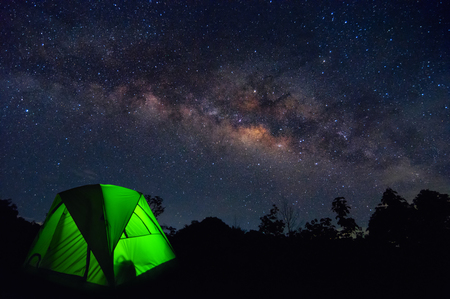Introduction to Amateur Astronomy in the UK
If you’ve ever gazed up at a clear night sky and wondered about the mysteries above, you’re not alone. Stargazing has fascinated Britons for centuries, and today’s amateur astronomers enjoy some truly unique opportunities thanks to Britain’s distinct geography, weather, and history. Whether you live in a bustling city or deep in the countryside, there’s something magical about spotting constellations, planets, and even the odd shooting star right here on British soil. What sets stargazing in the UK apart is our network of officially designated Dark Sky locations—special areas protected from light pollution where the cosmos comes alive in breathtaking clarity. Amateur astronomy here isn’t just for those with fancy telescopes; it’s accessible to anyone willing to look up and get curious. For beginners, this means you can start your journey with little more than enthusiasm and a willingness to explore. The UK’s community of stargazers is incredibly welcoming, with local clubs, public events, and online forums ready to support newcomers. In this guide, we’ll show you how to make the most of Britain’s dark skies as a beginner, from choosing your first stargazing spot to connecting with fellow enthusiasts across the country.
Essential Gear for British Stargazers
Getting started with amateur astronomy in the UK is all about having the right kit to make your stargazing both enjoyable and successful. The unpredictable British weather and varying conditions across our dark sky sites mean that being prepared can make all the difference between a magical night under the stars and a soggy disappointment. Here’s a practical look at what you’ll need as a beginner astronomer venturing out into Britain’s finest stargazing spots.
Must-Have Astronomy Equipment
You don’t need to invest hundreds of pounds straight away; in fact, many newcomers start with just a pair of binoculars and a simple star chart. Here’s a breakdown of essential gear:
| Item | Why You Need It | UK-Specific Tips |
|---|---|---|
| Binoculars (7×50 or 10×50) | Great for scanning the sky, spotting constellations, and viewing larger celestial objects like the Moon. | Choose waterproof models for those inevitable drizzly nights. |
| Star Chart/Planisphere | Helps you identify stars and constellations visible each month. | Get one calibrated for Northern Hemisphere and preferably laminated to survive damp evenings. |
| Torch with Red Filter | Preserves your night vision while reading maps or adjusting equipment. | A red bike light works well in a pinch if you’re improvising. |
| Notebook & Pencil | Jot down observations or sketches of what you see. | Pencils work better than pens in cold, damp conditions common in the UK. |
| Telescope (optional for beginners) | For closer views of planets, nebulae, and galaxies once you’re ready to upgrade. | A small refractor or Dobsonian is ideal for portability to rural sites. |
Weather-Appropriate Clothing & Accessories
The UK’s climate can be unforgiving – clear skies often come with biting cold, especially in autumn and winter months when nights are longest. Here’s what seasoned British stargazers always pack:
- Thermal layers: Base layers, jumpers, and insulated jackets are crucial for long sessions outdoors.
- Waterproof outerwear: A good quality waterproof jacket and trousers will keep you dry during sudden showers or heavy dew.
- Woolly hat & gloves: Heat escapes quickly from your head and hands; don’t overlook these basics!
- Sturdy boots: Fields and rural dark sky locations can get muddy; waterproof boots with decent grip are essential.
- Camping chair or mat: Stargazing often involves long periods of sitting still – make yourself comfortable!
Quick Kit Checklist for UK Stargazing Nights
- Binoculars or entry-level telescope (if you have one)
- Laminated star chart or planisphere
- Red torch/headlamp
- Pencil & notebook
- Warm clothing (layers, hat, gloves)
- Waterproofs (jacket, trousers, boots)
- Sit mat or fold-up chair
- A flask of tea – very British but absolutely essential!
Pro Tip: Always Check the Weather Before You Go!
The Met Office app is your friend here. Even the clearest day can cloud over by nightfall in Britain. Always check forecasts for cloud cover and temperature before heading out to any dark sky site. With the right gear packed, you’ll be ready to enjoy everything our British skies have to offer – whatever the weather throws at you!
![]()
3. Choosing the Right Dark Sky Location
Finding the perfect spot for stargazing is crucial to making the most of your amateur astronomy journey in the UK. Thankfully, Britain boasts several designated dark sky sites that are accessible and beginner-friendly. The best places to start are the UK’s national parks, such as Northumberland National Park, the Yorkshire Dales, Snowdonia, and Exmoor, all of which are officially recognised for their minimal light pollution and breathtaking night skies. These areas regularly host public stargazing events and have dedicated observatories or viewing platforms.
Exploring National Parks and Reserves
National parks often provide signposted dark sky discovery sites with parking and basic facilities. Some, like Galloway Forest Park in Scotland (the UK’s first Dark Sky Park), offer visitor centres where you can get maps and advice on the best stargazing spots. If you’re new to the hobby, consider joining a guided event or workshop — these are welcoming for beginners and a great way to meet fellow enthusiasts.
Rural vs Urban Stargazing
While rural locations naturally offer darker skies, don’t be discouraged if you live in a city. Urban stargazers can still enjoy astronomy by seeking out local parks after closing hours, hilltops away from streetlights, or even rooftop gardens. Some UK cities have dedicated astronomical societies that run events in surprisingly good urban spots. Always check access rules and safety information before heading out.
Practical Tips for Accessing Dark Sky Sites
Plan your journey ahead: public transport options can be limited at night in rural areas, so car-sharing with friends is popular among British stargazers. Dress warmly—British nights can get chilly even in summer—and bring a torch with a red filter to preserve your night vision. Remember to respect private land and follow the Countryside Code: leave no trace, keep noise down, and take all rubbish home.
4. Basics of Navigating the Night Sky
Getting to grips with the night sky might seem a bit daunting at first, but with a few simple British-friendly techniques and some handy resources, you’ll soon be spotting constellations, planets, and seasonal highlights like a pro. Here’s how to begin your stargazing journey across UK dark sky sites.
Identifying Constellations: A Beginner’s Guide
Start by familiarising yourself with the major constellations visible from Britain throughout the year. The Plough (or Big Dipper), part of Ursa Major, is an excellent starting point as it’s visible all year round in the UK and acts as a signpost for finding other key constellations. From here, you can use star-hopping—a technique where you move from one recognisable star or constellation to another—to locate celestial objects. British stargazing books such as “Philip’s Stargazing 2024” offer monthly charts tailored for UK skies and are invaluable for beginners.
Popular UK Constellations by Season
| Season | Constellation | How to Spot It |
|---|---|---|
| Winter | Orion | Look for Orion’s Belt—three bright stars in a row—low in the southern sky. |
| Spring | Leo | Find the backwards question mark shape (“the Sickle”) rising in the east after dusk. |
| Summer | Cygnus (The Swan) | The bright star Deneb marks its tail; look overhead for its cross shape. |
| Autumn | Pegasus | The Great Square is easily spotted high in the south-east during autumn evenings. |
Navigating Planets in the British Night Sky
Planets are often brighter than stars and don’t twinkle as much. In Britain, Jupiter and Venus are regularly visible to the naked eye and can sometimes be seen low above the horizon just after sunset or before sunrise. Mobile apps such as “Stellarium” or “Sky Guide” allow you to hold your phone up to the sky and identify planets and stars instantly using your precise UK location. These tools also provide alerts for when planets are best observed from your area.
Seasonal Highlights Worth Watching For
The UK calendar is packed with astronomical events. Meteor showers like the Perseids (August) and Geminids (December) are spectacular from dark sky reserves such as Northumberland or Exmoor. Eclipses, planetary conjunctions, and even occasional aurora sightings in northern Scotland make each season unique for amateur astronomers.
British Stargazing Resources & Tips
- BBC Sky at Night Magazine: Monthly sky guides tailored for UK conditions.
- Go Stargazing Website: Lists local stargazing events and best viewing spots across Britain.
- Red Torch: Use a red torch to preserve your night vision—easily found in outdoor shops across the UK.
- Laminated Star Charts: Weather-resistant charts are ideal for damp British nights out in the field.
If you’re just starting out, keep things simple: choose one constellation each night to find, use trusted UK-based resources, and enjoy discovering new corners of Britain’s beautiful dark skies at your own pace.
5. Stargazing Etiquette and Staying Safe
When venturing out to enjoy the wonders of British dark sky locations, its important to be mindful of both your own safety and the etiquette that ensures a positive experience for everyone. Here’s some essential advice for stargazing in the UK.
Respecting Local Countryside Codes
Many prime stargazing spots in Britain are found in rural or protected areas, such as national parks or Areas of Outstanding Natural Beauty (AONBs). Always adhere to the Countryside Code: leave gates as you find them, stick to marked paths, avoid disturbing wildlife, and take all your litter home. Remember, you’re often a guest on farmland or conservation land—respectful behaviour helps keep these sites open to future amateur astronomers.
Stargazing Etiquette
Minimise Light Pollution
Dark-adapted eyes are crucial for stargazing. Use red torches rather than bright white lights, and shield any necessary light to avoid ruining night vision—yours or others’. If you arrive by car, switch off headlights as soon as practical and keep interior lights low.
Share the Space
If other stargazers are present, keep noise levels down and give each group plenty of room. Avoid shining torches or lasers near others’ telescopes or cameras. If you’re using equipment that takes up space (like a tripod), set up at the edge of busy areas.
Safety Precautions
Plan Your Visit
Check the weather forecast and dress appropriately—British nights can get cold even in summer. Bring sturdy footwear and a map; mobile signals may be patchy in remote locations. Tell someone where youre going and when you expect to return.
Stay Aware of Your Surroundings
Be cautious around livestock, especially at night when animals can be startled easily. Watch your step for uneven ground or obstacles. If you’re in a group, establish a meeting point and keep track of each other.
Leave No Trace
The golden rule: take everything with you when you leave. This includes not only litter but also any gear or accidental rubbish. Leaving no trace preserves the beauty and accessibility of Britain’s dark sky sites for everyone.
6. Joining the UK Astronomy Community
While stargazing solo can be peaceful and rewarding, connecting with the wider UK astronomy community will accelerate your learning and make your experience much richer. Across Britain, there are countless local astronomy clubs where beginners are warmly welcomed—these groups often meet regularly to share their telescopes, swap stories, and offer hands-on advice. Many clubs arrange observing nights at dark sky locations, perfect for putting your new skills into practice under expert guidance.
Finding Your Local Astro Club
Most counties and larger towns have their own amateur astronomy societies; a quick search online or on social media will point you in the right direction. The Federation of Astronomical Societies (FAS) website is an excellent starting point for locating clubs near you. Don’t hesitate to drop them an email—members are usually enthusiastic about helping newcomers get started.
Public Events and Star Parties
Throughout the year, various public stargazing events and star parties pop up across the UK, especially in national parks such as Exmoor, Northumberland, and the South Downs. These gatherings range from informal meet-ups to large festivals with guest speakers, telescope demonstrations, and guided sky tours. Attending these events is a brilliant way to try out different gear, learn from seasoned astronomers, and discover what works best for you before investing in your own kit.
Online Communities and Forums
If you prefer learning from home or want to supplement your field experience, British-based online forums like Stargazers Lounge or the Facebook group “UK Astronomy” are packed with practical tips and lively discussions. You’ll find real-time advice on everything from gear recommendations to troubleshooting cloudy skies—plus alerts for upcoming celestial events specific to the UK.
Why Community Matters
Joining a club or an online group means you’re never left scratching your head alone when your telescope won’t focus or when clouds threaten to spoil the show. You’ll pick up invaluable tricks unique to our unpredictable British weather and gain access to shared equipment, group observing sessions, and even workshops on astrophotography. In short: being part of the UK’s astronomy community makes every night under the stars that little bit brighter.


